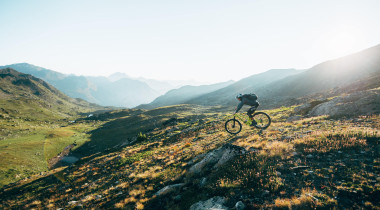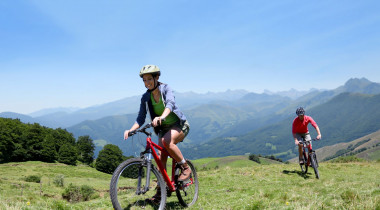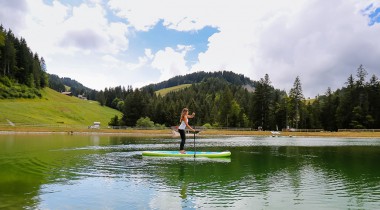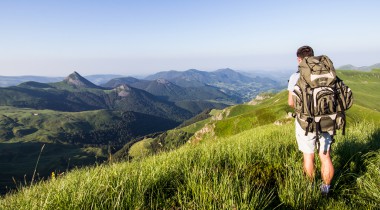22.02
2012
Mountain activities
Once a pastime only for top-level skiers, off-piste skiing has become accessible to a much larger public, thanks to equipment improvement and increased options offered by ski instructors and other guides. So why not give it a try this winter?
A practice accessible to all
A slope covered in fresh snow, untouched by the tracks of other skiers, away from the lifts – this is like a dream come true not only for freeriders, but for all those who seek a feeling of freedom and a rush of adrenaline.
Once a pastime only for top-level skiers, off-piste skiing has become accessible to a much larger public, thanks to equipment improvement and increased options offered by ski instructors and other guides. So why not give it a try this winter?
A practice accessible to all
A slope covered in fresh snow, untouched by the tracks of other skiers, away from the lifts – this is like a dream come true not only for freeriders, but for all those who seek a feeling of freedom and a rush of adrenaline.
A few years ago, this experience would have been out of the question for the average skier: straight skis required a flawless technique and top physical condition to be able to make a turn in powder snow. Today, better equipment has largely contributed to the democratisation of off-piste skiing. Parabolic skis – whose narrow shape allows one to turn almost without effort – have become the norm, and a growing number of skis are outfitted with “rockers” or “ extended tip” enabling them to glide easily above the powder. Therefore, it is no longer necessary to shift one’s weight toward the back of the skis, which is strenuous for the knees and thighs, as the technique was until the mid 90’s.
“One must stay balanced over the centre of the skis, neither too far forward nor too far back,” explains Patrick Paltz, technical director of the Ecole du Ski Français of Val d’Isère. “Otherwise, it is difficult to compensate for acceleration and braking, which are frequent when skiing off-piste due to the varying snow depth. The other key is to keep skis flat, not to balance on the edges. While on the slopes, one always presses down more on the outside ski, off-piste, it is important to balance weight evenly between both skis.”
Start progressively
In order to get a handle on the various off-piste techniques, it is advisable to take a course with a qualified instructor. A growing number of ski schools offer specially adapted courses. “One can attempt off-piste skiing from Class 3 level – red slopes level,” says Paltz. “Off-piste skiing is part of the natural progression of the skier. The choice of terrain is fundamental. It is also important to have proper equipment – otherwise one will face great difficulty instead of enjoying the experience.”
For the first time off-piste, the instructor will generally choose a nearby terrain, meaning slopes situated right next to the groomed slopes. “It is important to work progressively, beginning with an off-piste slope “groomed” by other skiers tracks. The powder will not be deep, but the difference is already perceptible – the snow is softer than on the groomed slopes.
Next, we will search for slopes with 10-15 centimetres of fresh snow, preferably not too steep. When possible, one must endeavour to follow the fall line in order to maintain a good bearing capacity,” says Paltz.
In terms of equipment, use a slightly longer ski than you normally would, (skis should be 5 to 10 centimetres more than your height, compared to 5 cm less for skis used on groomed slopes) and slightly wider.
Learning to ski off-piste is more than simply acquiring a new technique – it also means understanding essential safety precautions. “One must always remain humble, and not hesitate to turn back or to choose a less ambitious itinerary than planned. One must also learn to use an Arva (a tool for searching avalanche victims), to observe the snow, not to descend as a group on a virgin slope, etc.,” advises Paltz. “A minimum of two weeks of practice is required before one can really feel comfortable off-piste – but the pleasure makes it all worthwhile. It is a feeling of liberty and tranquillity. It is possible to indulge in high- mountain atmosphere without necessarily seeking out extreme situations.”





